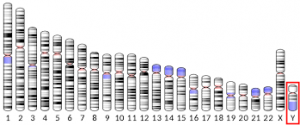
This week someone told our team about the Facebook group Women in Academia Support Network (#WiASN), and we have found it so enlightening! It’s a group that does what it says on the tag: A network run by women for women where staff in academia can share their thoughts/worries/problems/news and rants to get feedback and support from their peers. And what’s interesting (And in some ways oddly reassuring) is that seniority doesn’t seem to matter when it comes to shared problems. Women at many different levels of their career are all voicing similar issues, meaning that everyone can learn from each other. Now there’s a novel idea!
A snapshot of some of the recurring posts shows that one of the main worries facing women is how to juggle their work commitments with home life. The concerns differ: Am I a bad mother for going back to work so soon? Is it socially acceptable to keep my maiden name for my publication record? Am I a bad academic for wanting to spend time with my child? How can I manage the emotional stress of trying to find a home-work balance? But they all highlight the difficulty of being an ‘Academic mum’.
Another theme seems to be early career researchers (ECRs) trying to establish their own sense of self in their careers, with ‘imposter syndrome’ being a common phrase. One very clear issue for many ECRs seems to be the weight of guilt of holding a prestigious grant or fellowship and constantly feeling that they’re unable to ‘live up to’ the kudos. This is something that we’re very aware of in the faculty at Newcastle, and are hoping to hold workshops to help support ECRs with issues such as these.
Finally, one of the striking threads of conversation comes from the “Should I jump ship and leave academia?” question. The pros of flexible working and clear career pathways are argued against bigger salaries and leaving work firmly in the office drawer. There is a sense of guilt over ‘betraying’ supervisors or ‘wasting’ PhDs offset against accolades of achievement in getting a ‘dream job’ or finally being able to actually apply knowledge into the ‘real world’. It’s a pertinent question that not many ECRs dare ask: Is the grass greener outside of academia? Or does it, at the very least, have a chance to grow better?
If you’re a woman in academia, the group is definitely worth a look…




